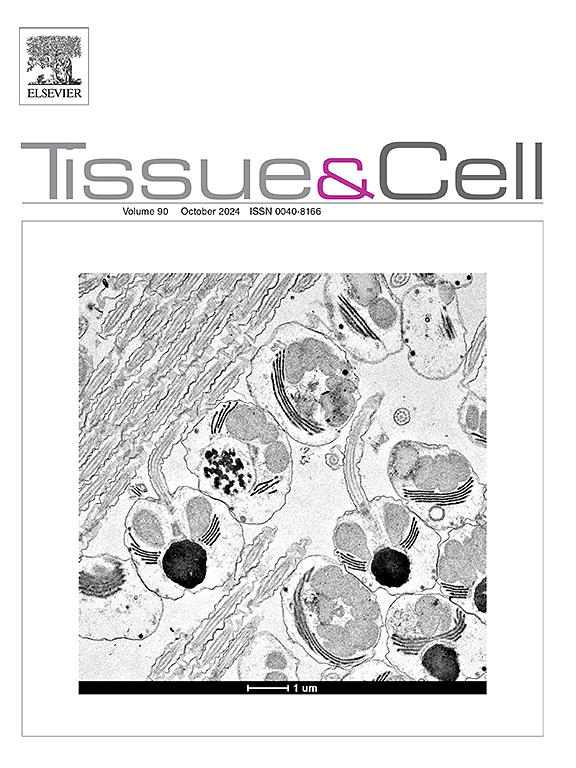Comparison of the ovariole structure and oogenesis between Bittacus cirratus Tjeder and Bittacus planus Cheng (Mecoptera: Bittacidae)
IF 2.7
4区 生物学
Q1 ANATOMY & MORPHOLOGY
引用次数: 0
Abstract
The eggs are subspherical in some species of Bittacidae, but are cuboidal in others. However, the formation mechanism of cuboidal eggs remains unclear so far. Here, we compared the ovariole structure and oogenesis between the hangingflies Bittacus cirratus Tjeder, 1956 with cuboidal eggs and Bittacus planus Cheng, 1949 with subspherical eggs using light and transmission electron microscopy. The results show that the ovariole is of the meroistic-polytrophic type, consisting of a terminal filament, a germarium, a vitellarium, and an ovarian pedicel. During the oogenesis, each follicle has one oocyte and three nurse cells surrounded by follicle cells. The difference occurs between B. planus and B. cirratus during the choriogenesis. In B. cirratus, the follicle is in an elliptical shape along the anterior-posterior axis during the late previtellogenesis, but transforms into a cuboidal shape during the choriogenesis. The formation mechanism of the cuboidal eggs is briefly discussed for hangingflies.
卷叶螟与扁螟子房结构及卵发生的比较(鞘翅目:螟螨科)
在某些种类的蠓科,卵是近球形的,但在其他种类的蠓科,卵是立方的。然而,长方体卵的形成机制至今仍不清楚。本文利用光镜和透射电镜对1956年产长方卵的垂蝇Bittacus cirratus Tjeder和1949年产亚球形卵的垂蝇Bittacus planus Cheng的卵巢结构和卵发生进行了比较。结果表明,卵巢为分生多养型,由顶丝、胚珠、卵黄和卵巢花梗组成。在卵子发生过程中,每个卵泡有一个卵母细胞和三个被卵泡细胞包围的乳母细胞。在绒毛膜形成过程中,扁平双歧杆菌和卷状双歧杆菌之间存在差异。在毛膜发育晚期,毛囊沿前后轴呈椭圆形,但在绒毛膜发育期间,毛囊转变为立方形状。简要讨论了悬蝇卵的形成机制。
本文章由计算机程序翻译,如有差异,请以英文原文为准。
求助全文
约1分钟内获得全文
求助全文
来源期刊

Tissue & cell
医学-解剖学与形态学
CiteScore
3.90
自引率
0.00%
发文量
234
期刊介绍:
Tissue and Cell is devoted to original research on the organization of cells, subcellular and extracellular components at all levels, including the grouping and interrelations of cells in tissues and organs. The journal encourages submission of ultrastructural studies that provide novel insights into structure, function and physiology of cells and tissues, in health and disease. Bioengineering and stem cells studies focused on the description of morphological and/or histological data are also welcomed.
Studies investigating the effect of compounds and/or substances on structure of cells and tissues are generally outside the scope of this journal. For consideration, studies should contain a clear rationale on the use of (a) given substance(s), have a compelling morphological and structural focus and present novel incremental findings from previous literature.
 求助内容:
求助内容: 应助结果提醒方式:
应助结果提醒方式:


